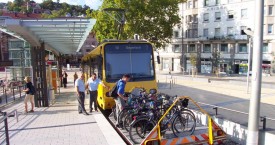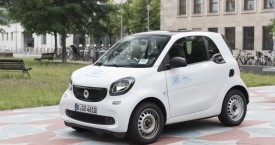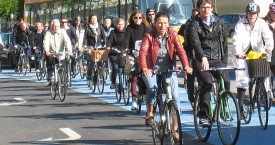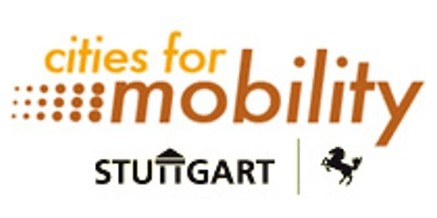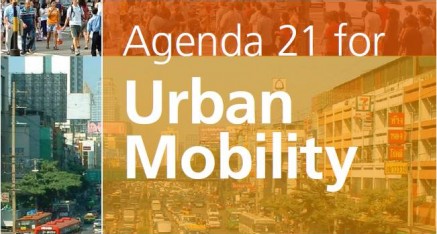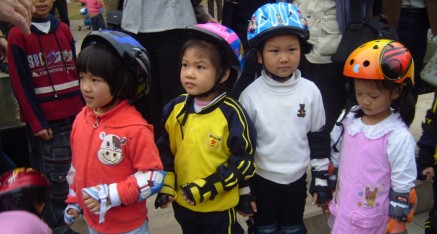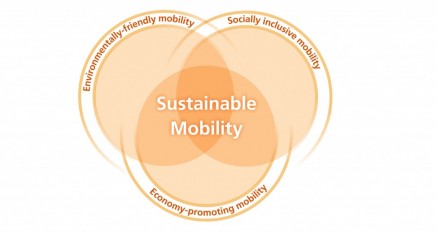Die Menschen in unseren wachsenden Städten und Großstadtregionen wollen und müssen mobil sein. Hinzu kommen just- in-time-Lieferungen und der rasch wachsende Online-Handel. Um die für die Gesundheit schädlichen und klimaschädliche Emissionen, vor allem Feinstaub und Stickstoffdioxid (NO2), zu verringern, werden in vielen Städten Fahrverbote erlassen. Umso dringlicher ist es, umweltfreundliche Alternativen anzubieten.
Stuttgart steht wie keine andere Stadt weltweit für Mobilität. Beginnend mit dem „Stutengarten“, gegründet um das Jahr 950, wurde vor im Jahr 1886 hier das erste Automobil erfunden. Heute ist Stuttgart ein global vernetztes weltweites Kompetenzzentrum für Mobilitätsfragen dank der Beruflichen Schulen, Universitäten, Forschungs- und Entwicklungsinvestition, die eng verknüpft sind mit vielen führenden Unternehmen, vor allem Daimler, Mercedes, Porsche und Bosch.
Prof. Dr. Schuster war 16 Jahre Aufsichtsratsvorsitzender der Stuttgarter Straßenbahnen AG und des Verkehrsverbundes VVS der Region Stuttgart. Beide Unternehmen wurden wiederholt ausgezeichnet wegen ihrer Innovations- und Leistungsfähigkeit sowie der hohen Kundenzufriedenheit.
Prof. Schuster gründete 2006 das Netzwerk „Cities for Mobility“, dem inzwischen über 600 Mitglieder aus 83 Ländern einschließlich Universitäten, Unternehmen und internationale Organisationen angehören. Wolfgang Schuster wurde auch Vorsitzender des Ausschusses für urbane Mobilitätsfragen des Weltverbandes der Städte und Gemeinden (UCLG). Im Rahmen dieser Arbeit wurde die „Agenda 21 for Urban Mobility“ entwickelt.
People want to be and must be mobile in our growing cities and city regions. In addition, there are the phenomena of just in time deliveries and the rapidly increasing online commerce. To decrease the volume of health- and climate-damaging emissions, especially particulates and nitrogen oxide (NO2), many cities implement traffic bans. Therefore, it gets more pressing to offer environmentally friendly alternative solutions.
Stuttgart has a long tradition in mobility. The city was founded more than thousand years ago as a stud farm (“Stutengarten”). In 1886 the first automobile worldwide was invented in Stuttgart. Today Stuttgart is a global competence centre for mobility thanks to professional schools, universities, research and development institutions which are closely linked with many leading companies notable Daimler, Mercedes, Porsche and Bosch.
Professor Dr. Schuster was a board member of the Stuttgarter Straßenbahn AG and the public transport association VVS of the Stuttgart Region for 16 years. Both companies were repeatedly awarded national and international prizes for their innovation and efficiency, and for their high levels of customer satisfaction.
Prof. Schuster founded in 2006 the global network „Cities for Mobility“ to which over 600 members from 84 countries, including universities, companies and international organisations, are currently affiliated. Prof. Schuster also became Chair of the „Committee Urban Mobility“ of United Cities and Local Governments (UCLG). In the framework of this Committee the „Cities For Mobilitiy_Agenda21“ was developed.
The importance of cities as living space for people is growing. More than half of the world population today lives in cities. Cities are the motor of economic and social development. They are also the places where the ecological and social challenges of the 21st century are particularly accumulating. Part of these challenges are the growing traffic and the accessibility of our cities.
Shaping transportation and traffic in our cities is an essential responsibility of cities. To better cope with these tasks the United Cities and Local Governments (UCLG) set up the Urban Mobility Committee. UCLG is representing more than 3 billion citizens in 170.000 local authorities from over 130 countries. I have the honour to be chairman of this Committee and president of the European Section of UCLG.
Started as an European- Latin-American URBAL- Network, Cities for Mobility is today a global network with over 600 members from 83 countries including universities, companies and international organisations. With its Agenda 21 for Urban Mobility we will contribute to developing sustainable mobility: Socially inclusive, environmentally-friendly and economy-promoting. In this endeavour we cooperate closely with experts from universities, research institutions, international organisations, NGOs and the private sector. Our network serves as platform where local governments can present their good practices, problems and initiatives.
– The Agenda 21 for Urban Mobility –
The Agenda 21 for Urban Mobility describes the future trends, challenges and tasks in the field of urban mobility and presents a series of good practices from all over the world.
Challenges for urban mobility
We are aware, that
1. all people are equally entitled to mobility since it is a basis for the realization of most other basic rights;
2. the goals of the UN-Agenda 2030 only can be achieved if people have adequate and payable access to mobility services;
3. urban mobility plays a fundamental role in achieving the favorable economic, social, ecological and cultural development of a community or a large urban area;
4. urban transportation systems particularly in many poorer countries do not yet satisfy the demands on a safe, healthy, socially equitable and environmentally compatible supply of mobility services to people and thus constitute an obstacle to development;
5. the transportation systems of today, especially the extensive use of privately owned vehicles in most cities of the industrial countries, currently are not sustainable owing to their high consumption of non-renewable resources and their significant emissions;
6. the gap is becoming more difficult between the increasing mobility needs of a strongly growing urban population, on the one hand, and a foreseeable scarcity and rise in price of fossil energy sources on the other;
7. new solutions involving new fuels and sources of energy for growing mobility have to be developed in agreement with social, ecological and economic requirements;
8. alternative non-fossil fuels only are a contribution to sustainable solutions if they do not compete with the preservation of the rainforests and the securing of regional food production;
9. sustainable mobility models in the cities of the world must rely on the optimal utilization of all technological, planning and organizational resources, but also are dependent on the development of a sustainable mobility culture by transportation users;
10. cooperations of cities within the scope of the work of UCLG can lead to the more rapid spread of exemplary solutions, to greater sustainability of the urban transportation systems and consequently to a fairer globalization in our One World.
– Future trends for urban mobility –
The development of traffic and mobility reflects the social, economic and technical trends in our cities. These are influenced by ten mega-trends:
1. The population of our cities is constantly growing both for demographic reasons and owing to the continued rural exodus.
2. The cities are centers of economic growth and thus of individual prosperity which lead to a growing differentiation in lifestyles and mobility requirements.
3. The growing individualization of urban society coupled with a growing number of small households leads to more traffic.
4. Rising land prices and rising rents in the centers of conurbations have the consequence that rents for living space rise disproportionately, the lower and middle classes as well as families with children migrate from the centers, and the number of commuters constantlygrows.
5. The cities are developing more and more into metropolitan regions within which the distances between homes, workplaces and recreational facilities increase.
6. An increasing geographic flexibility of employees (“modern nomadism”) makes the streams of commuters grow between cities too.
7. New forms of shopping by car, especially in large malls, and the use of recreational facilities on the verges of cities generate new streams of traffic.
8. Increasing e-Commerce, the use of the internet, and other forms of a media-based shopping culture, for example meals on wheels, result in growing individual delivery operations.
9. The “just-in-time” delivery of physical products and services results in the growing transport of goods and people in our cities.
10. People’s increasing speed orientation leads to a high demand for mobility services on road and rail, on the water and in the air.
As the consequences of these mega-trends, ever more people are moving ever more and ever faster. More and more goods are being delivered to more and more places just-in-time. The fast growth of transport services worldwide leads to higher consumption of resources, growing damage to the environment and global warming. Political structures, legal obstacles, lack of funds, and lack of awareness in the population prevent the changes required to organize the growing mobility in our cities in a way which is socially inclusive, healthy, safe, ecologically acceptable and economically efficient.
Objectives for urban mobility
To solve the growing problems we need a comprehensive and integrated approach with three major goals for:
» socially inclusive mobility
» environmentally friendly mobility
» economy promoting mobility
The objectives are moving targets. They are depending on different living conditions, economic possibilities and financial resources. To improve the situation every city should create a master plan for mobility, integrated in the overall planning for the development of the city. To facilitate this work we add some guidelines with measures and best practice examples to this agenda.
Tasks for urban mobility
1. Socially inclusive mobility
• Enable all segments of the population to participate in local public transportation
• Preserve and extend public infrastructure close to homes and jobs
• Shape demographic change in the area of mobility
• Enhance road safety
• Protect residential quarters and districts with recreational functions from noise and air pollution
2. Environmentally-friendly mobility
• Minimize traffic flows through integrated urban and traffic planning
• Encourage non-motorized and public transport
• Expand mobility management
• Reduce fuel consumption and emissions
• Strengthen public awareness of sustainable mobility
3. Economy-promoting mobility
• Create attractive and efficient transportation systems
• Ensure efficient mobility for people and goods
• Coordinate the requirements of transportation with other forms of land use
• Create efficient institutions for traffic control
Networks and partners for urban mobility
To achieve the goals and implement the measures in the fields of action we are operating with many partners and networks within our cities and between the cities. We cooperate with national and international partners as well with our Premium partners.
Invitation for membership
We invite
»» Cities and Regions
»» Public transportation companies
»» Businesses and corporations
»» Educational and research institutions
»» NGOs
to become members of the network Cities for Mobility. Your membership is free of charge. (Online registration: http://www.cities-for-mobility.org)
As founder of Cities for Mobility I would like to thank all our partners, members and colleagues for the fruitful cooperation. I am looking forward to a successful working together for a Sustainable Mobility in our cities.

